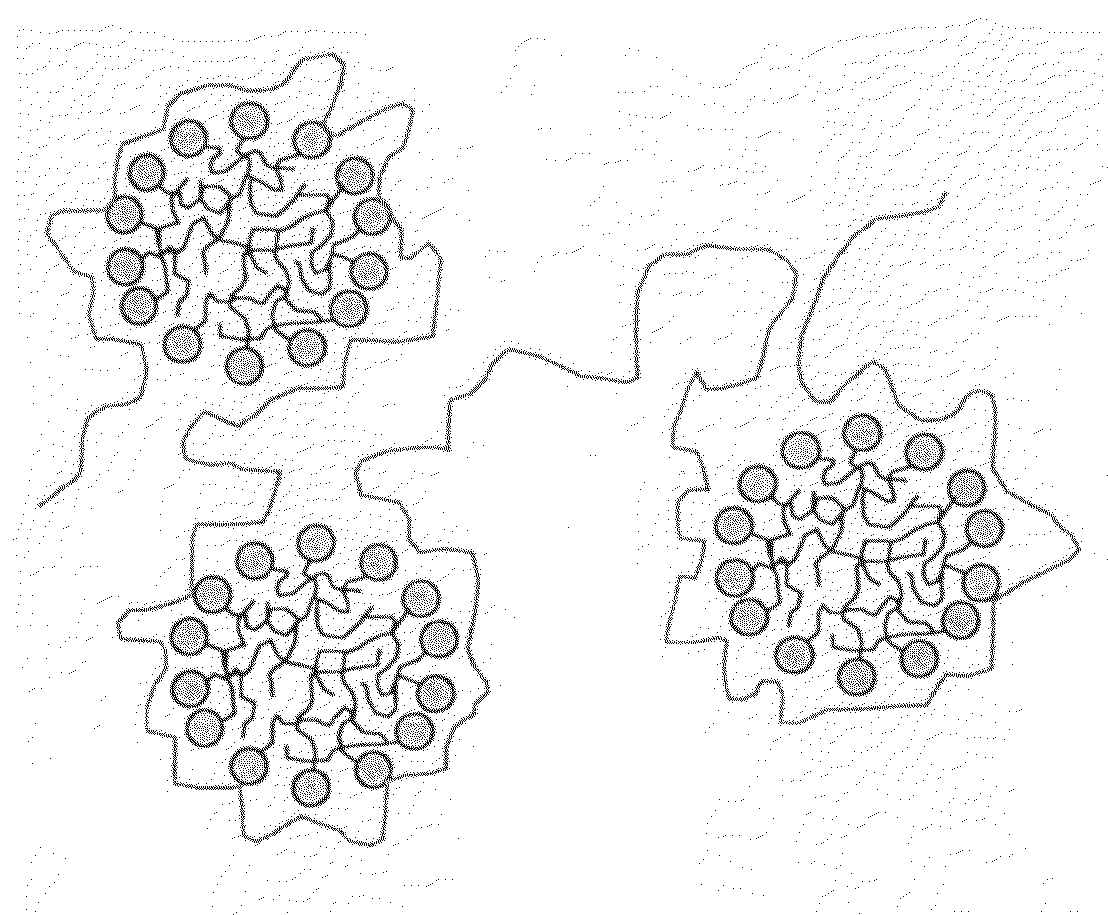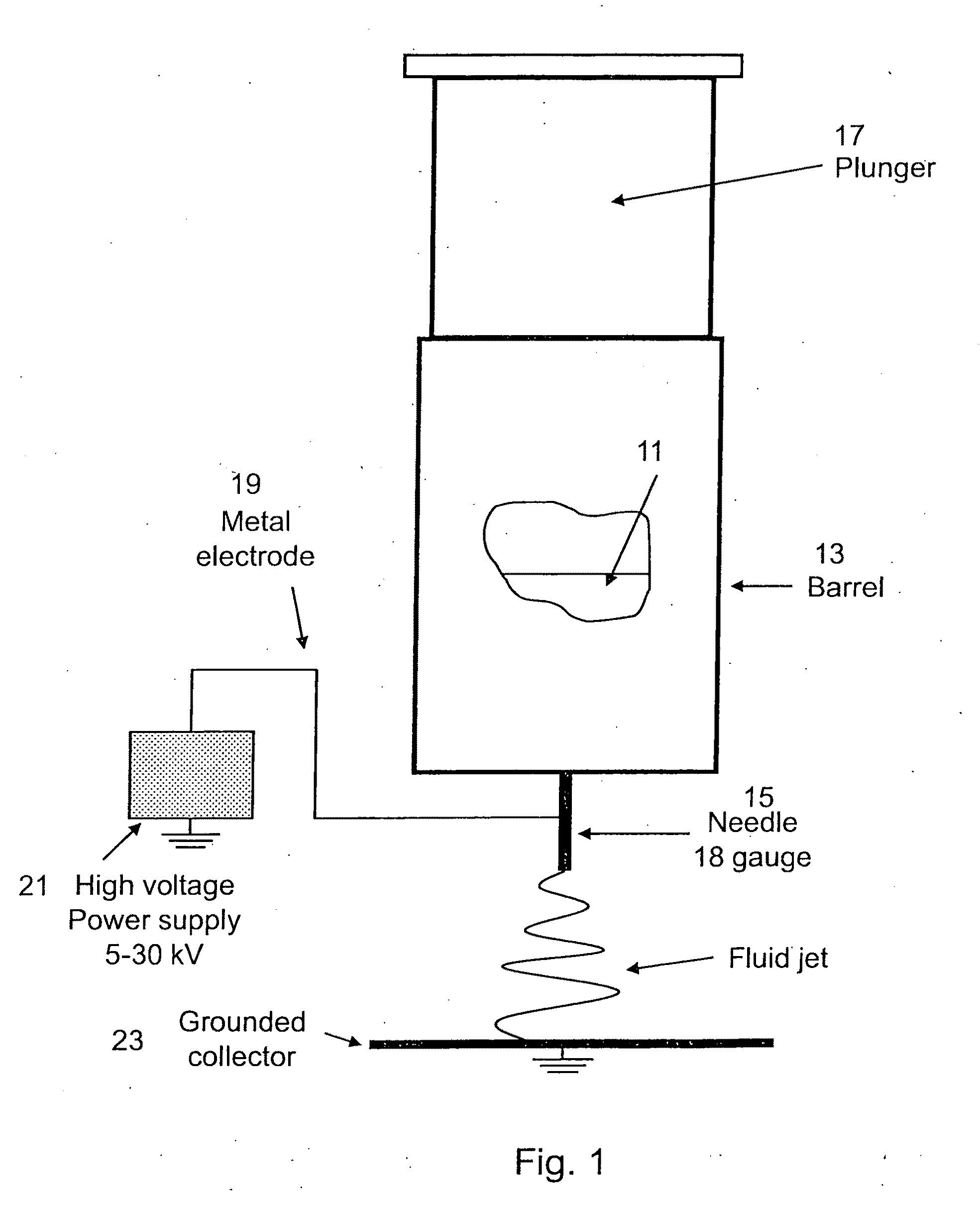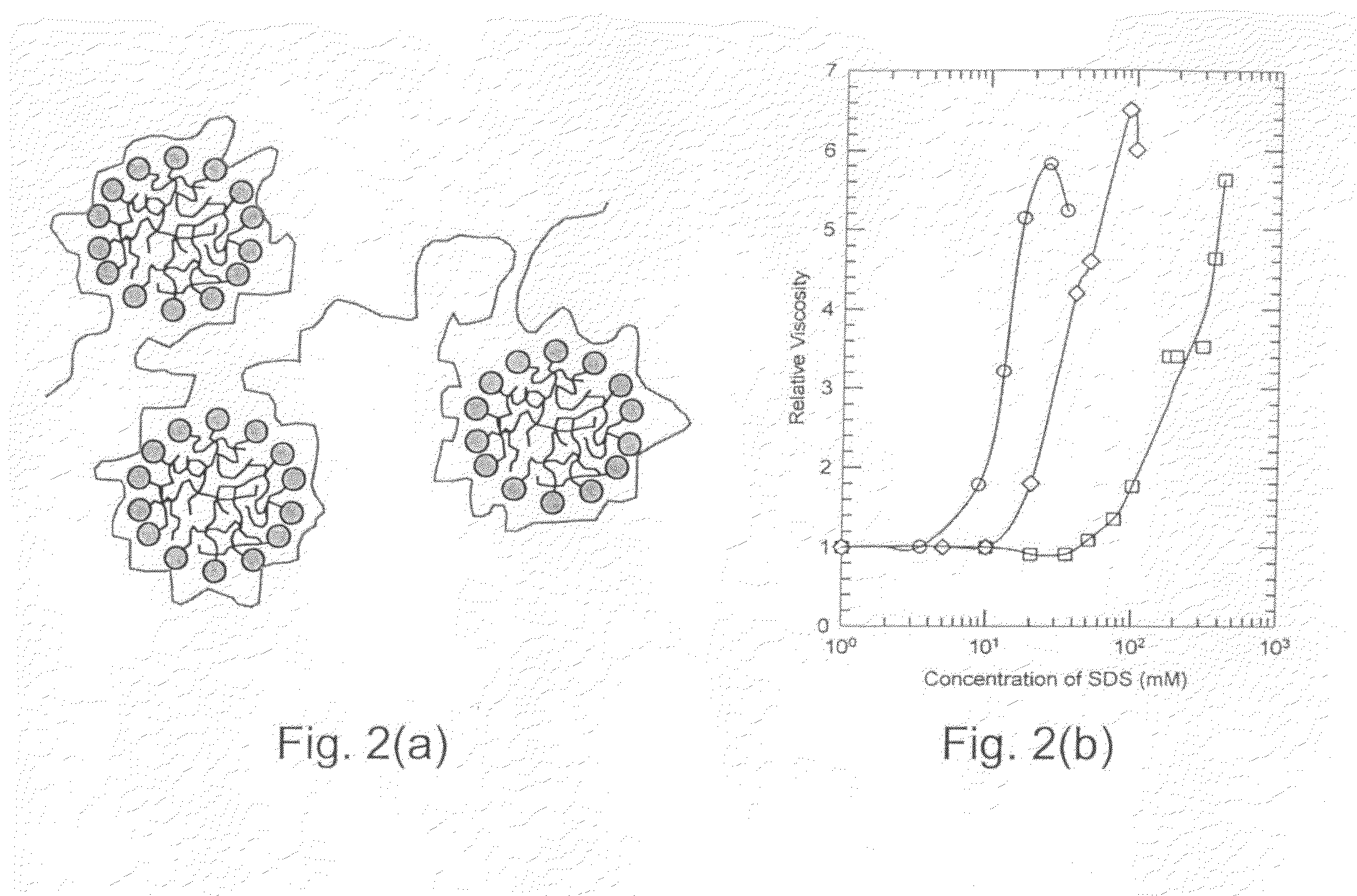Polymer-micelle complex as an aid to electrospinning
a polymer and membrane complex technology, applied in the field of nanofibers and electrospinning aids, can solve the problems of unstable jets that break into droplets and form beaded structures, jets experience whipping instability, and bending and stretching of jets
- Summary
- Abstract
- Description
- Claims
- Application Information
AI Technical Summary
Benefits of technology
Problems solved by technology
Method used
Image
Examples
example 1
[0032]The relative viscosities of a number of polyethylene oxide-surfactant solutions (relative viscosity being defined as the ratio between the viscosity of the polymer and surfactant solution and the viscosity of the polymer solution, both at the same polymer concentration) were determined experimentally. The results are plotted in FIG. 2(b) as a function of the surfactant concentration for the anionic surfactant sodium dodecyl sulfate interacting with different molecular weights and concentrations of polyethylene oxide. (The circles represent a high molecular polymer, the squares represent a low molecular weight polymer, and the diamonds represents an intermediate molecular weight polymer.)
[0033]As can be seen, the viscosity data show that the polymer molecular weight, polymer concentration, and surfactant concentration are variables that can be manipulated to obtain any desired viscosity value. In general, the lower the polymer molecular weight, the higher the polymer and surfac...
example 2
[0034]To illustrate how a polymer-micelle complex may be used as an aid to electrospinning, Applicants investigated the electrospinning of a gel forming, silk-elastin biopolymer, SELP (Genencor International, Inc., Rochester, N.Y.). SELP is a genetically engineered repeat block of copolymer of protein sequences representative of silk and elastin. It has the structure H2N—(S3E3EKE4S3)1-13—COOH, where S stands for the silk-like peptide block GAGAGS (SEQ ID NO: 1), E stands for the elastin-like peptide block GVGVP (SEQ ID NO: 2) and EK stands for the modified elastin-like peptide block, GKGVP (SEQ ID NO: 3). The molecular weight of the polymer is about 70,000 Dalton. The protein polymers are water-soluble and they form irreversible gels due to physical interactions if the polymer concentration is large enough—even at ambient temperatures. The rate of gelation is dependent on the polymer composition, concentration, temperature and other solution conditions. The gelation is indeed exploi...
PUM
| Property | Measurement | Unit |
|---|---|---|
| diameter | aaaaa | aaaaa |
| diameter | aaaaa | aaaaa |
| contour length | aaaaa | aaaaa |
Abstract
Description
Claims
Application Information
 Login to View More
Login to View More - R&D
- Intellectual Property
- Life Sciences
- Materials
- Tech Scout
- Unparalleled Data Quality
- Higher Quality Content
- 60% Fewer Hallucinations
Browse by: Latest US Patents, China's latest patents, Technical Efficacy Thesaurus, Application Domain, Technology Topic, Popular Technical Reports.
© 2025 PatSnap. All rights reserved.Legal|Privacy policy|Modern Slavery Act Transparency Statement|Sitemap|About US| Contact US: help@patsnap.com



